Chickamauga – Sept 1863
“Captain, this is the death knell of the Confederacy,” a junior officer had remarked to his company commander as the withdrawal got underway from Missionary Ridge. “If we cannot cope with those fellows with the advantages we had on this line, there is not a line between here and the Atlantic Ocean where we can stop them.” “Hush, Lieutenant,” the captain told him, slogging rearward through the darkness. “That is treason you are talking.” *

Soldiers avoid the mud in McLemore’s Cove during a reenactment of the Battle of Chickamauga, Ga 2013.
Thus it seemed for the Confederacy in November of 1863 after a three-month campaign in the Western theater that saw more twists and turns for the Confederates, more missed opportunities, more reversals of fortune, then any other military campaign during the American Civil War.
“Viewed solely from the microcosm of Virginia, by the summer of 1863, the Civil War appeared to be at a stalemate. Confederate forces had frustrated repeated Federal offensives through two long years of war and occupied roughly the same ground they had held in 1861. But in the Western theater, the war was anything but static, and by nearly every measure was turning decisively against the Confederates. The vast spaces and plethora of navigable rivers offered Union forces access into the interior of the rebellious states.” (CWT)
This campaign of maneuver carried out by the Union Army of the Cumberland, from Nashville to Chattanooga, is considered one of the most brilliant tactical feats and military campaigns of the Civil War. But the relatively bloodless campaign of maneuver, which witnessed one Confederate retreat after another, ended abruptly in late September 1863, just south of Chattanooga. It was here along the banks of a deep winding creek in the wilderness that the Rebels stopped retreating and instead attacked the Union Army and sent it reeling.
Even today the confusion and complexity of what is called the, “Tullahoma, Chickamauga and Chattanooga Campaign” is not hard to fathom if you travel to this region of the country. For one, it’s still a wilderness….

Reenactors camp in Georgia’s historic McLemore’s Cove 150 years after Union and Confederate troops skirmished here preceding the Battle of Chickamauga in Sept. 1863.
The Cumberland Plateau, stretching from Kentucky, through eastern Tennessee to the borders of Georgia and Alabama, remains the world’s longest hardwood forested plateau. A multitude of creeks drain from the plateau into the winding Tennessee River creating a landscape of majestic thickly forested ridges that greet you today as they did the soldiers of both armies 150 years ago.
The City of Chattanooga sits at the southern edge of the Cumberland Plateau where the Tennessee River makes a hair-bend turn at Lookout Mountain as the water carves its way past the City. In the 1860s Chattanooga was an important rail link for the South and a boasted a population of two thousand souls but the surrounding countryside, only a couple of decades removed from its Cherokee origins, remained a frontier region; densely forested and sparsely populated with only a sprinkling of hard-scrabble farms and clearings in the wilderness.
The Chattanooga Campaign
In the summer of 1863, on the heals of the Union victories at Gettysburg and Vicksburg, President Lincoln sought to keep up the momentum and pressure the Rebels by ordering Maj. Gen. William Rosecrans and his Army of the Cumberland, 50,000 strong, to leave their base at Nashville and march to liberate East Tennessee and capture the vital southern rail link at Chattanooga. Capturing Chattanooga would sever the Confederacy’s only direct rail connection from the Western to the Eastern theaters of the war and set the stage for an eventual Federal push into Georgia.
In response to this new threat from Rosecrans’ army, Confederate President Jefferson Davis begins to transfer troops west to support General Braxton Bragg and his Army of the Tennessee. The two opposing commanders, Rosecrans and Bragg, had met before, six months earlier, at the inconclusive Battle of Stone’s River in Murfreesboro, Tennessee.
Between the months of July and September 1863, Rosecrans and the Army of the Cumberland applied the military tactics of faint and misdirection, confusing the Confederates as they made their way southeast toward Chattanooga. Dividing his large force into three separate columns, Rosecrans moves forward constantly outflanking Bragg while taking advantage of the mountainous terrain to hide the movements of his army.
The terrain could be exasperating at times and was in evidence when the perplexed Gen. Bragg liken the mountains surrounding Chattanooga to a house full of holes. Bragg was described as being “bewildered by the popping out of the rats from so many rat holes.”
Out maneuvered, Bragg and the Confederates retreat to Chattanooga, begin fortifying the City and wait for a final showdown with Rosecrans. General Rosecrans continues his tactics of faint and misdirection keeping part of his army opposite Chattanooga to demonstrate against the Confederates and swings the majority of his troops south threatening to envelop the entire City. This unnerves Bragg and he abandons Chattanooga retreating with his disgruntled and frustrated army southward toward Lafayette, Georgia.
On September 9th. 1863 Rosecrans and the Army of the Cumberland, after months of maneuvering, had captured Chattanooga basically without a shot fired. Arriving in the City and elated by the success of the campaign so far, Rosecrans, orders a head long pursuit of the Confederates and sends a telegraph message to his superiors in Washington. In the wire transmission Rosecrans highlights the taking of Chattanooga, the continued unabated pursuit of the Rebels and vows to “drive Bragg into the sea” **
But, “…Bragg was not retreating, and the Federals who thought they were chasing him were marching straight into trouble. Bragg was concentrating his army at Lafayette, less than 25 miles from Chattanooga; far from running away, he was preparing to strike the nearest part of the invading army as soon as he could organize his columns of assault….He could attack the three Federal corps one at a time; all of them were within his reach, and they were so widely separated that no one of them could come to the rescue of the others.”**
Turning to meet the Army of the Cumberland the Confederates begin to retrace their steps and march north toward Chattanooga using a winding creek as their guide. The creek, named by the Cherokee, was called the Chickamauga, meaning ominously, ….the River of Death.
The Battle of Chickamauga
“The Battle of Chickamauga, September 19th & 20th 1863, remains one of the most confusing and least understood battles of the Civil War. In the deep woods and on the small farms of this remote northwest Georgia locale, a fierce battle raged that ranks only second to Gettysburg in the number of losses incurred.”*****
“Union Major General William Rosecrans’s Army of the Cumberland and Confederate General Braxton Bragg’s Army of the Tennessee grappled for two days of bloody, indecisive fighting before a Federal mistake and fortunately timed Southern attack changed the fortunes of the battle.”*****
“The battle…went by nobody’s plan, once the first shots were fired. A Federal brigadier summed it up perfectly when he wrote that it was, a mad, irregular battle, very much resembling guerrilla warfare on a vast scale, in which one army was bushwhacking the other, and wherein all the science and art of war went for nothing.” **
The confused fighting at Chickamauga was mainly due to the terrain and topography of the battlefield.
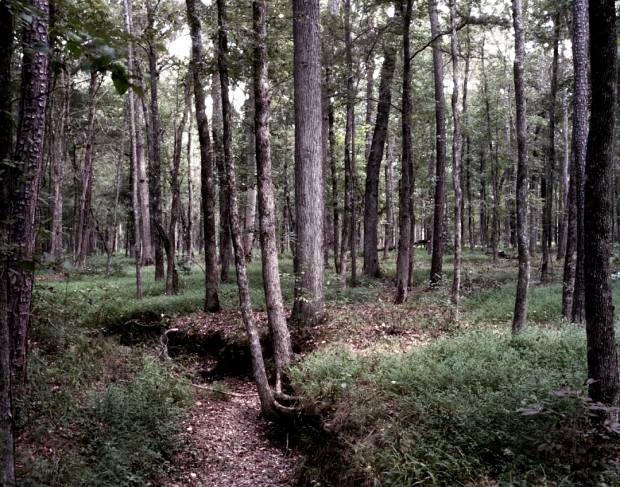
The Park Service cleared the underbrush from some of the forest areas at Chickamauga to resemble the battlefield in 1863. In the mid 19th century domesticated and wild animals would have eaten much of this undergrowth leaving an open forest like this one opposite the Brotherton Farm on the Battlefield at Chickamauga, Ga 2013.
“The dark forests and limited clearings triggered a host of unexpected combats, flanking maneuvers, and direct assaults that left commanders on both sides confused as to the ebb and flow of the battle.” ***
Confederate Sam Watkins’ relates his first impression of Chickamauga,
“The battlefield was in a rough and broken country, with trees and undergrowth, that ever since the creation had never been disturbed by the ax of civilized man. It looked wild, weird and uncivilized.”
The two armies stumbled into each other on the morning of Sept. 19th along Chickamauga Creek at Reed’s Bridge. The Chickamauga is a deep winding waterway that meanders on a north/south axis, the creek serving as a distinct battle line that morning. Union and Confederate troops fought back and forth across the creek but Confederate troops eventually pushed the Union Army back and west through the wilderness.
Rosecrans, surprised by the sudden attack by Bragg, orders his troops to protect the Lafayette Road, the main road back to Chattanooga, five miles away. The Lafayette Road would be protected at all hazards as Rosecrans saw this route as the Union Army’s only escape if things got ugly.
General Bragg was a good military tactician and saw the value of this country road. Bragg’s attack plan called for the Confederates to crush the Union left and gain possession of the Lafayette Road and block this Union escape route. At the same time Bragg ordered an attack on the Union right to prevent Rosecrans from reinforcing his left.
For two days the Lafayette Road, a small country lane in the wilderness, would become the epicenter of the battle.
The experience of fighting at Chickamauga was the same for either army. Confusion reigned. The topography and terrain south of Chattanooga was heavily wooded giving the commands of either side no clear idea of how the battle progressed throughout the day.
“The land between Chickamauga Creek and the Lafayette Road was gently rolling but almost completely wooded….In the woods no officer above brigadier could see all his command at once, and even the brigadiers could often see nobody’s troops but their own and perhaps the enemy’s. Chickamauga would be a classic ‘soldiers battle’, but it would test officers at every level of command in ways they had not been previously tested.”****

Union troops protect the “Lafayette Road” during a reenactment of the Battle of Chickamauga, Ga 2013.
Individual units fighting in the dense woods would find the enemy suddenly emerge and advancing on their flank and rear. This happen constantly throughout the fighting on the first day.
Capt. Henry Hammond of the 18th US Regulars writes, “We at once changed front to the rear and march to the edge of a ravine and formed a hasty line. We had scarcely got into position before a division of the enemy advanced upon us on the run….” ***
Sgt. Benjamin Brown of the 87th Indiana regiment found his unit in similar circumstances, “they came very near to surrounding us here, so near that we had to change front to the rear in order to get at them again.” ***
“These attacks and counterattacks had inflicted steady losses, but neither side was able to hold onto advantage for long, which all but guaranteed that both sides would send more men that way to try an achieve a decisive breakthrough.”*****
“…nobody could see much of the enemy’s position, it was almost impossible to move artillery along the narrow country lanes, both armies were sodden with weariness, drinking water was hard to find, casualties were extremely heavy, and by nightfall all anyone could be sure of was that there had been a terrible fight and that it would be worse tomorrow.”**
The fighting on September 19th at Chickamauga ended pretty much as a stalemate with both armies facing each other on the same, tightly held ground; the battlefield now strewn with thousands of wounded, dead and dying men.
The Union army slightly out numbered the Confederates on the 19th but the tide would turn over night as Confederate General James Longstreet arrived at Chickamauga from Virginia with 12,000 reinforcements for Bragg.
September 20th 1863.
“Although each side had fought the other to a bloody draw on Sept. 19th, Bragg held one significant advantage over Rosecrans: fresh troops.” ***
As the day dawned on Sept. 20th, General Rosecrans, after days of no rest, the constant marching and fighting of his army, had left the Union commander weary and shaken. Knowing that Bragg had been reinforced, Rosecrans worked to further consolidated his troops and prepared to meet the Rebels again.
Because of the confusing terrain at Chickamauga, Rosecrans had been disregarding the normal chain of command, instead of consulting his subordinates, was personally ordering units to different parts of the field during the battle. This caught up with the weary Rosecrans midway through the 20th when he ordered a unit from one part of the field to another without filling the gap that opened up in his line. This, to Rosecrans’ demise, was the exact portion of the field that would soon see Confederate Gen. Longstreet’s afternoon attack.
Longstreet’s men, “….rushed through the woods and burst into the Dyer Field. In moments, the 11,000 Confederates in this column broke the Federal line, routed the right-wing of the Army of the Cumberland, drove Rosecrans and two of his three corps commanders from the field, and threatened to destroy the whole Union Army.”*****
But not all Union commanders ran from the field that day. Second in command at Chickamauga, Union General George Thomas, with the coolness of a veteran, directs his men to fall back on some high ground to their rear. Thomas had spied the ground at Horseshoe Ridge, the woods and steep ravines would be good defensive ground; Thomas was determined to hold off the Confederates until night fall. Darkness would give Thomas the cover he needed to get the remainder of the army off the field in one piece.
Thomas takes up a position behind Snodgrass Hill on Horseshoe Ridge and directs the battle from there. Again, the terrain, the dense woods, the myriad of ravines and ridges along Horseshoe Ridge, made for a desperate and bloody conclusion to the Battle at Chickamauga.

Union troops make a stand on “Snodgrass Hill” in a reenactment of the Battle of Chickamauga, Ga 2013.
“In the confounding series of hills and ravines, the curvature of the ridge crests, and the lack of visibility in the woods created a tactical nightmare for the Confederates trying to take Horseshoe Ridge. That is why so many soldiers who fought there thought that this was the most frightening battle they had participated in during the a Civil War.” *****)
But, “…the seven hours of desperate fighting on this ground ended in a decisive Confederate victory – and with the immortal sobriquet for a Union general born in Virginia.”***** For this rear action, General George Thomas would forever be known as, The Rock of Chickamauga.
General Thomas successfully retires whats left of the Union Army from the field that evening. He joins Rosecrans and the rest of the Army of the Cumberland now hold up in Chattanooga.
Nearly, 35,000 men had been killed or wounded in the two-day fight.
The next day, Bragg, his army battered from two intense days of fighting, fails to follow-up the victory. With the Union Army now penned up in the City, over the following days the Confederate commander moves the Army of the Tennessee to the ridges surrounding Chattanooga. With Confederate guns bristling from the surrounding hills, Bragg would keep Rosecrans and the Army of the Cumberland surrounded at Chattanooga; it would be a siege and Bragg planned to starve out the Yankees….
Chattanooga, Lookout Mountain, Missionary Ridge and Grant – Nov 1863
Lincoln relieves Rosecrans after this debacle, describing the commander’s confused state as akin to “duck hit on the head”. Gen. Ulysses S. Grant is sent to put things in order at Chattanooga. The defensive ground held by the Confederates here at Chattanooga was formidable. General Sherman, arriving with Union reinforcements, was surprised to see Confederate guns and pickets, so close and looming over the City. With fresh troops arriving from the north, Grant studies the ground and comes up with a plan.
Grant’s break out of Chattanooga was one of the most dramatic reversals of fortune to occur during the Civil War. The Confederates, on the heals of their victory at Chickamauga, saw their advantage crumble away when on November 25th 1863, Union troops scaled Missionary Ridge and chased them from the summit.
Bragg and the Confederate Army are now in a pell-mell retreat from Chattanooga. Grant orders Generals Phil Sheridan and Joe Hooker to follow-up on the success but the Confederates escape into Georgia and Grant finally calls a halt to the fighting.
The battle at Chickamauga in September 1863 ended in a decisive Confederate victory. The fighting was on a vast scale and ranks only second to Gettysburg in casualties occurred. But the overwhelming reversal at Missionary Ridge in November 1863, coming so soon after, dashed any hopes for the Confederate armies of the West. Chickamauga would be the Confederate’s last victory in the war as a new Union general took charge. His name would haunt the South for decades to come…..William Tecumseh Sherman.
After the successful campaign at Chattanooga Lincoln brings Grant to Washington and gives him overall command of the Union Army. This position, last held by George Washington during the American Revolution, would give the Union’s most winning general the flexibility and the troops he would need to bring the war to its conclusion. Grant would now focus on the war in the East and Robert E. Lee.
Chattanooga would become Sherman’s supply and logistics base for his incursion into Georgia and continue to serve as an important center during the war…. but Chickamauga was not forgotten. Chickamauga and Chattanooga Military Parks would be the first battlefields protected and preserved, saved by the veterans, after the Civil War and are currently managed by the National Park Service.
Notes:
*(Shelby Foote – The Civil War: A Narrative Vol 2)
**(Bruce Catton – Never Call Retreat)
***(David Powell – Maps of Chickamauga)
****(Charles River Editors – The Battle of Chickamauga)
*****(Robert Carter – The Fight for Snodgrass Hill)
CWT (Civil War Trust)


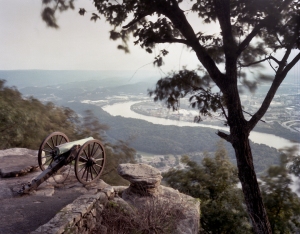








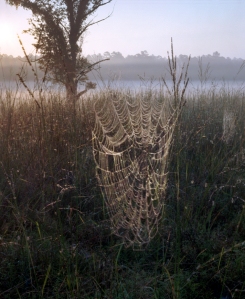
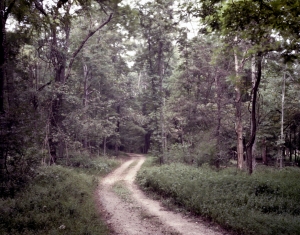


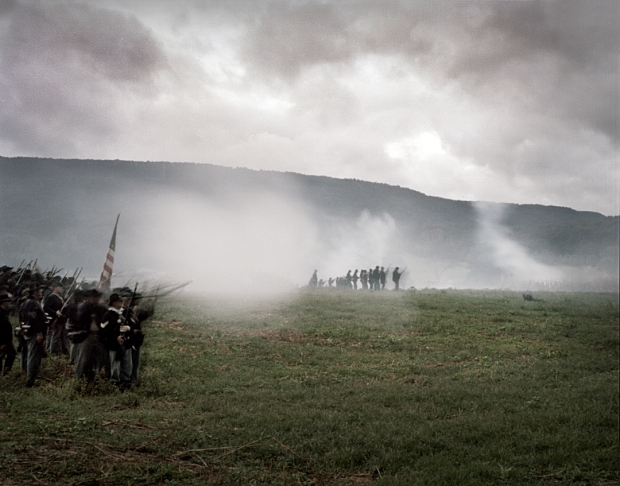




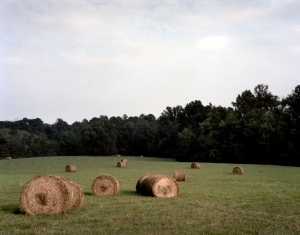




Nice!! Very informative.
Perhaps the most beautiful Civil War site I have yet to see. Great history. Elegant photography. Thank you!
Chris, thanks so much for taking a look at the site. I’ll be in Charleston, SC next week. If you “follow” the blog you’ll get an email alerting you to all the new posts.
sincerely
mike falco